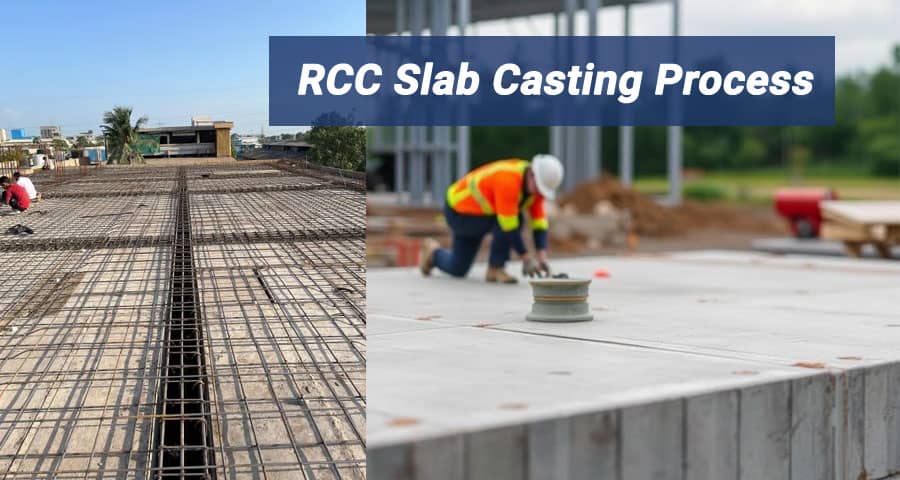A Brief Guide to the RCC Slab Casting Process

At CivilGuidelines, we understand that the process of reinforced cement concrete (RCC) slab casting can be a challenging and complex process. That is why we have put together this brief guide to help you better understand the process and make informed decisions when selecting a contractor for your next project.
1. Preparing the Site
The first step in the RCC slab casting process is site preparation. The site must be levelled and compacted before the work can begin. This is to ensure that the foundation is strong enough to support the weight of the slab. In some cases, excavation may be necessary to remove any obstructions or to reach the desired depth for the foundation.
2. Building the Formwork
Once the site is prepared, the next step is to build the formwork. This is the frame that will hold the concrete in place while it sets. The formwork must be strong and secure, and it must be built to the precise dimensions of the slab. The formwork is typically made from wood, steel or aluminium.
3. Reinforcing the Slab
Before the concrete is poured, reinforcement bars are laid within the formwork. These bars are essential to the strength and durability of the slab. The bars are placed in a grid pattern and tied together to form a sturdy framework.
4. Pouring the Concrete
Once the formwork and reinforcement are in place, the concrete can be poured. The concrete mix must be carefully selected to ensure that it meets the required strength and durability standards. The mix is poured into the formwork, and it must be spread evenly to avoid any air pockets or weak spots.
5. Finishing the Surface
After the concrete has been poured, it must be smoothed and levelled. This is done using a trowel, and it is essential to achieve a smooth, level surface. The surface can also be polished or textured, depending on the desired finish.

6. Curing the Concrete
The final step in the RCC slab casting process is to cure the concrete. This is done by keeping the slab moist and cool for a period of several days. Curing is essential to ensure that the concrete reaches its full strength and durability potential.
At CivilGuidelines, we have a team of experienced professionals who understand the complexities of the RCC slab casting process. We are committed to delivering high-quality workmanship and using the best materials available to ensure that our clients receive the best possible results.
In conclusion, RCC slab casting is a complex process that requires careful planning and execution. By following the steps outlined in this guide, you can be better informed when selecting a contractor for your next project.
Please watch the following short video for RCC Slab Casting Process
